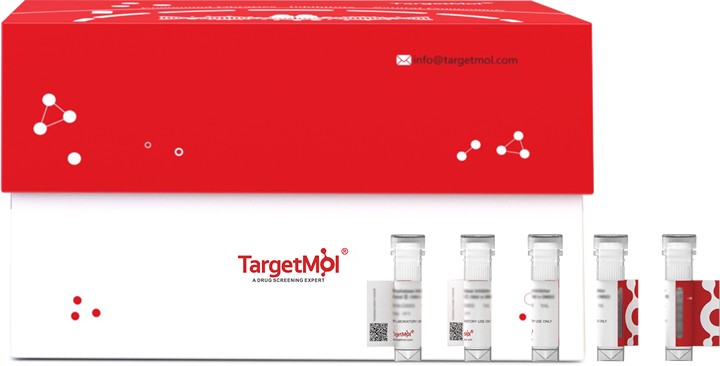Shopping Cart
- Remove All
 Your shopping cart is currently empty
Your shopping cart is currently empty

Arginase-1/ARG1 Protein, Mouse, Recombinant (His & SUMO) is expressed in E. coli expression system with N-6xHis-SUMO tag. The predicted molecular weight is 50.8 kDa and the accession number is Q61176.

| Pack Size | Price | Availability | Quantity |
|---|---|---|---|
| 20 μg | $284 | 20 days | |
| 100 μg | $590 | 20 days | |
| 1 mg | $2,530 | 20 days |
| Biological Activity | Activity has not been tested. It is theoretically active, but we cannot guarantee it. If you require protein activity, we recommend choosing the eukaryotic expression version first. |
| Description | Arginase-1/ARG1 Protein, Mouse, Recombinant (His & SUMO) is expressed in E. coli expression system with N-6xHis-SUMO tag. The predicted molecular weight is 50.8 kDa and the accession number is Q61176. |
| Species | Mouse |
| Expression System | E. coli |
| Tag | N-6xHis-SUMO |
| Accession Number | Q61176 |
| Synonyms | Type I arginase,Liver-type arginase,Arginase-1,Arg1 |
| Amino Acid | MSSKPKSLEIIGAPFSKGQPRGGVEKGPAALRKAGLLEKLKETEYDVRDHGDLAFVDVPNDSSFQIVKNPRSVGKANEELAGVVAEVQKNGRVSVVLGGDHSLAVGSISGHARVHPDLCVIWVDAHTDINTPLTTSSGNLHGQPVSFLLKELKGKFPDVPGFSWVTPCISAKDIVYIGLRDVDPGEHYIIKTLGIKYFSMTEVDKLGIGKVMEETFSYLLGRKKRPIHLSFDVDGLDPAFTPATGTPVLGGLSYREGLYITEEIYKTGLLSGLDIMEVNPTLGKTAEEVKSTVNTAVALTLACFGTQREGNHKPGTDYLKPPK |
| Construction | 1-323 aa |
| Protein Purity | > 90% as determined by SDS-PAGE. |
| Molecular Weight | 50.8 kDa (predicted) |
| Endotoxin | < 1.0 EU/μg of the protein as determined by the LAL method. |
| Formulation | Tris-based buffer, 50% glycerol |
| Reconstitution | A Certificate of Analysis (CoA) containing reconstitution instructions is included with the products. Please refer to the CoA for detailed information. |
| Stability & Storage | Lyophilized powders can be stably stored for over 12 months, while liquid products can be stored for 6-12 months at -80°C. For reconstituted protein solutions, the solution can be stored at -20°C to -80°C for at least 3 months. Please avoid multiple freeze-thaw cycles and store products in aliquots. |
| Shipping | In general, Lyophilized powders are shipping with blue ice. Solutions are shipping with dry ice. |
| Research Background | Key element of the urea cycle converting L-arginine to urea and L-ornithine, which is further metabolized into metabolites proline and polyamides that drive collagen synthesis and bioenergetic pathways critical for cell proliferation, respectively; the urea cycle takes place primarily in the liver and, to a lesser extent, in the kidneys.; Functions in L-arginine homeostasis in nonhepatic tissues characterized by the competition between nitric oxide synthase (NOS) and arginase for the available intracellular substrate arginine. Arginine metabolism is a critical regulator of innate and adaptive immune responses. Involved in an antimicrobial effector pathway in polymorphonuclear granulocytes (PMN). Upon PMN cell death is liberated from the phagolysosome and depletes arginine in the microenvironment leading to suppressed T cell and natural killer (NK) cell proliferation and cytokine secretion. In group 2 innate lymphoid cells (ILC2s) promotes acute type 2 inflammation in the lung and is involved in optimal ILC2 proliferation but not survival. Plays a role in the immune response of alternatively activated or M2 macrophages in processes such as wound healing and tissue regeneration, immune defense against multicellular pathogens and parasites, and immune suppression and allergic inflammation; the regulatory outcome seems to be organ specific. In tumor-infiltrating dendritic cells (DCs) and myeloid-derived suppressor cells (MDSCs) plays a role in suppression of T cell-mediated antitumor immunity. |

Copyright © 2015-2025 TargetMol Chemicals Inc. All Rights Reserved.